More of your questions answered! (see Part I here and an additional answer here)
How do you administer their medications?
The chimps take a number of different medications for both acute and chronic conditions. Most medications are mixed with smoothie, juice, or Gatorade and served to the chimps in a cup through the mesh. This is the easiest way to make sure each chimp gets the correct medication and to ensure that they took the entire dose. Each morning, the person serving as 2nd Staff is responsible for preparing medications in labeled cups, which they then set on trays to be served along with their meals.
Some of these medications are nearly tasteless while others have a bitter or metallic flavor that cannot be covered up by any amount of juice, in which case we will try things like yogurt or honey. For some drugs, we’ve learned the only way to get the chimps to take them is to have them microencapsulated at a specialized compounding pharmacy. This is a process in which the medication is prepared in tiny particles which are then covered in a tasteless coating – imagine a bunch of Advil tablets but 1/500th the size. The microencapsulated drug can then be mixed into a yogurt or other food without throwing off the taste. It’s expensive but worth every penny when a sick chimp is reluctant to take their meds.
The chimps all differ in how easily they will take medications. For Negra, we go straight for the pineapple coconut juice – she generally won’t take meds in anything else. Gordo is similarly stubborn. He will even spit all of the liquid out onto the floor or a piece of cardboard, sift out any undissolved medication, and slurp it back up. And if he senses too much undissolved medication, he will spit it right back in your face.
Most of the chimps allow us to hold the cup and pour the juice or smoothie into their mouths, but some insist on holding the cup themselves. Burrito is one who must hold his own cup and when he’s done, he delights in letting it drop and even throwing it down to the ground. Others, like Honey B, politely wait for us to come back and take it from them so as not to cause a fuss. One time I got sidetracked after giving Cy his cup and when I returned a couple minutes later, he was still holding it up and waiting for me to collect it.
Some medications are given topically, as in the case of antiseptics for wounds or even lotions or salves for dry, cracked skin. For these, we encourage the chimps to cooperate through positive reinforcement training.
The most difficult time to give medications is in the days following a procedure, when the chimps are still recovering from anesthesia. Unfortunately, this is often the most critical time to give drugs like analgesics and antibiotics. We make sure to give long-acting injectable drugs while they are still in the clinic, but eventually we have to beg and plead for them to take them orally. We will try anything. Some of you may remember Burrito’s late night medication-stuffed bagels. There is no better sense of accomplishment than when a sick chimpanzee finally takes the medication they need to recover.
Are the chimps on any type of birth control?
Yes, all of the females that regularly cycle, with the exception of Annie, are given hormonal birth control each morning. One reason to give birth control is, as you might have guessed, to prevent pregnancy – we are doing this for the females in the newly integrated group until we can see who copulates and/or confirm that the males are still sterile from the vasectomies they were given years ago. So far it’s still just Terry and Dora copulating on occasion, but you can’t be too careful. But there are other medical reasons to administer birth control hormones. Jamie, for example, was put on birth control to suppress the normal anogenital swelling associated with her cycle, which we worried might increase the pain and discomfort of her anal fistulas. Jody was placed on birth control due to a uterine fibroid and abnormal menstrual bleeding.
Of course, birth control isn’t the only medication we administer on a daily basis. Some chimps, like Burrito and Cy, take medications to manage their heart disease. Others, like Foxie and Negra, take medications to manage pain associated with arthritis. Just like us, the list of medications grows longer as they grow older. This morning, Anna prepared 29 different medications and supplements for our 16 chimpanzees – and that was just the a.m. dose!
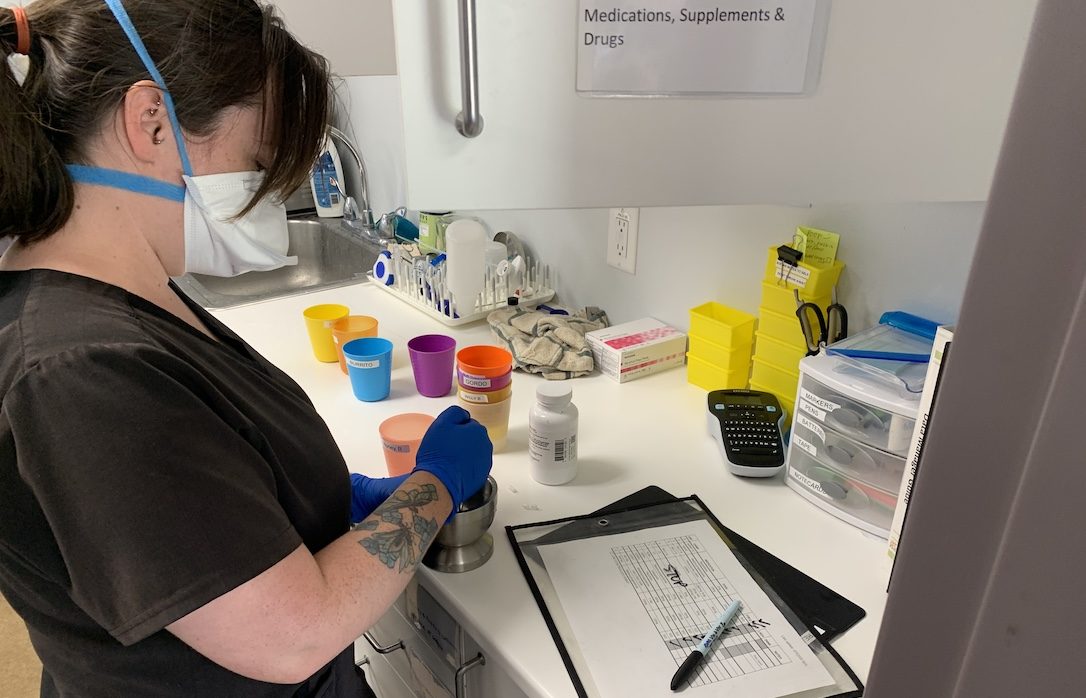
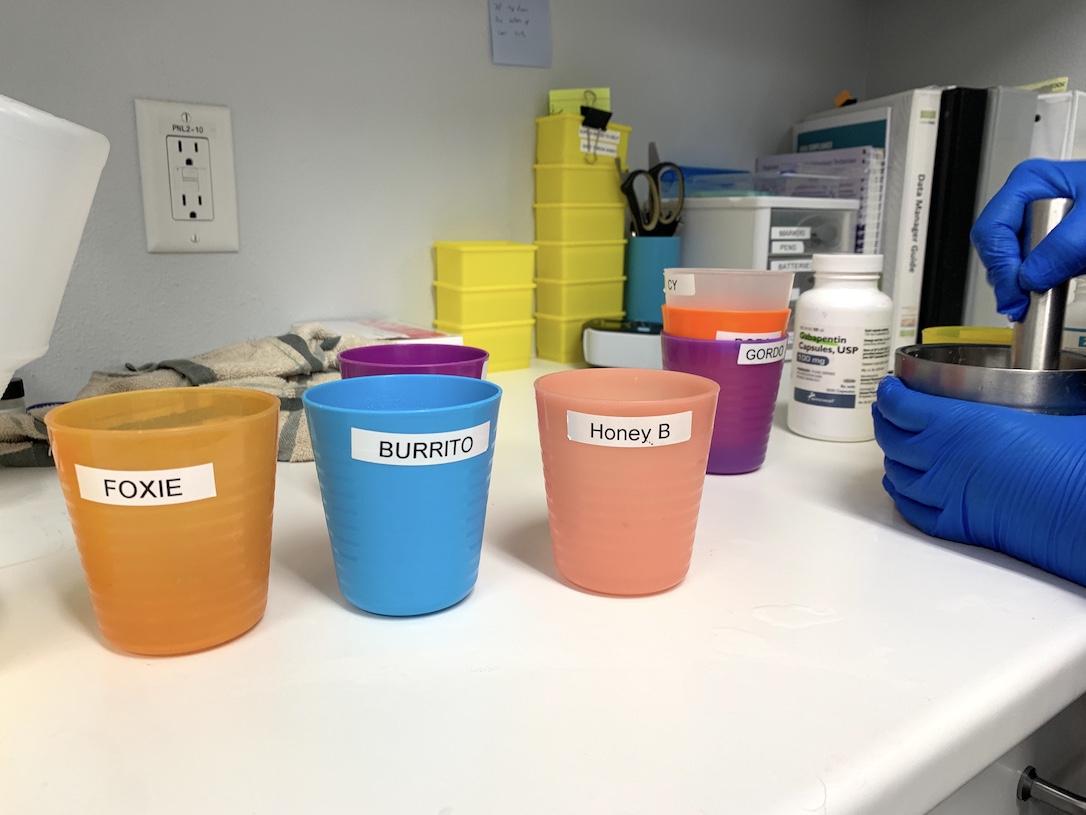
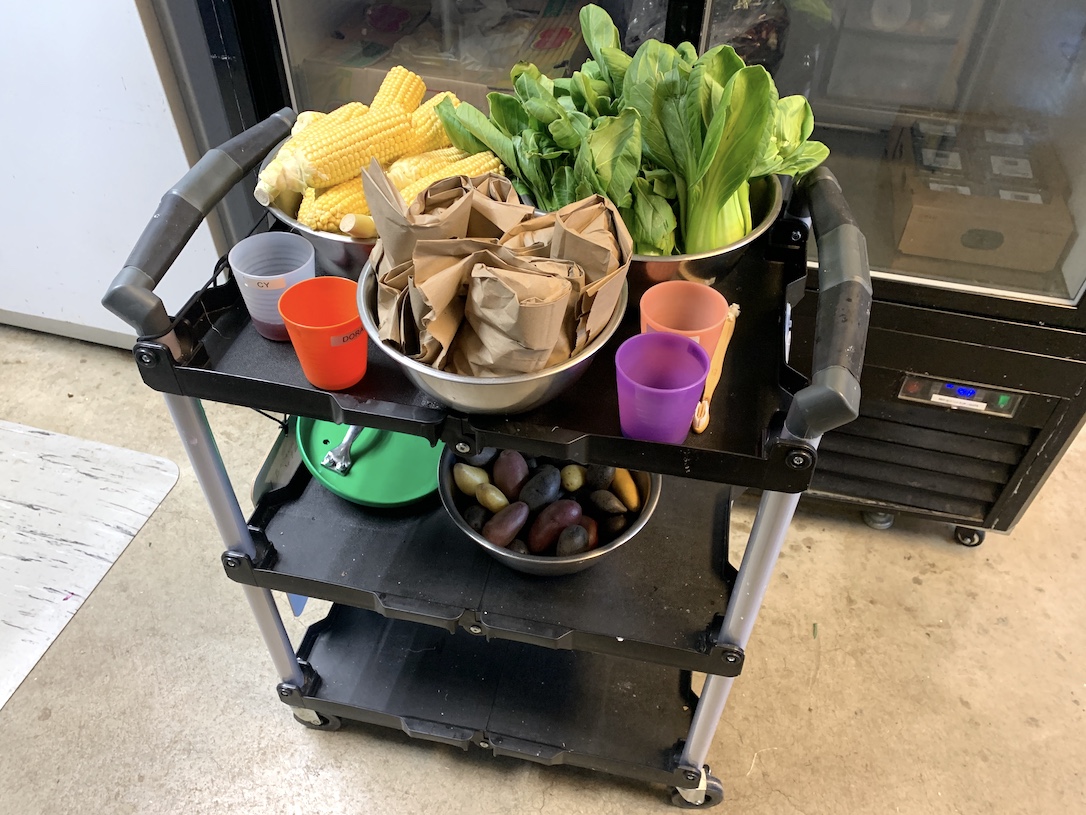
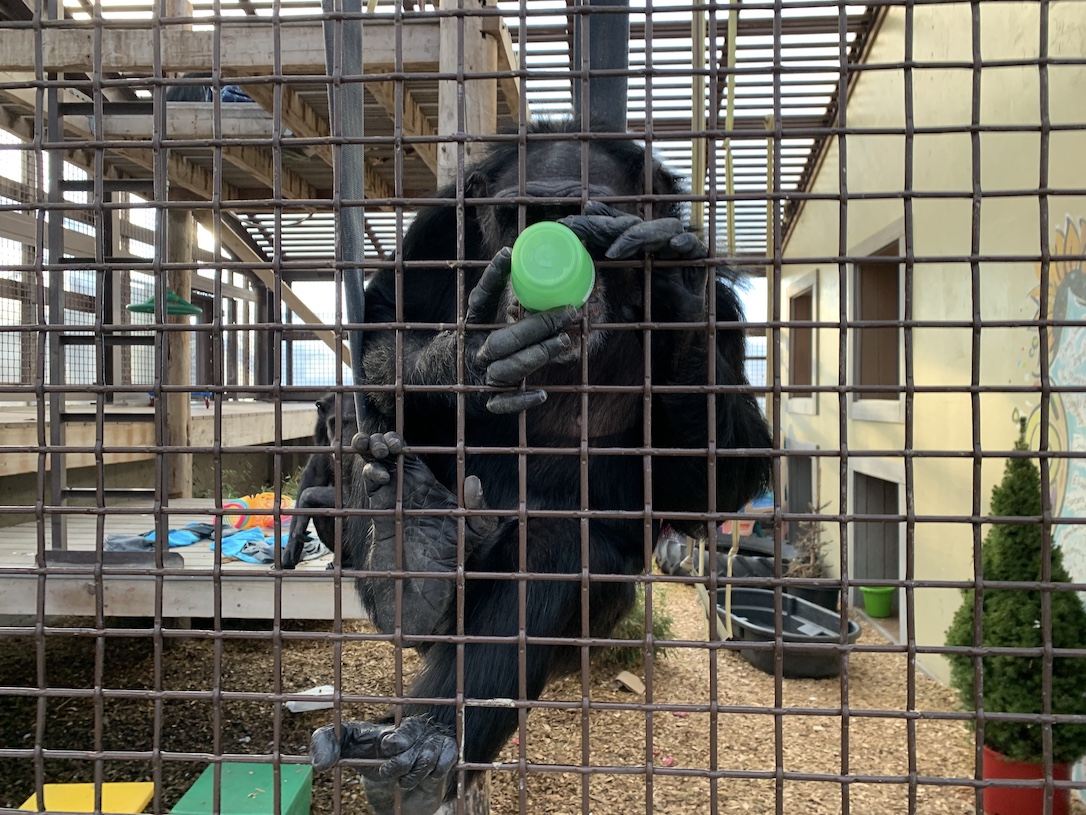
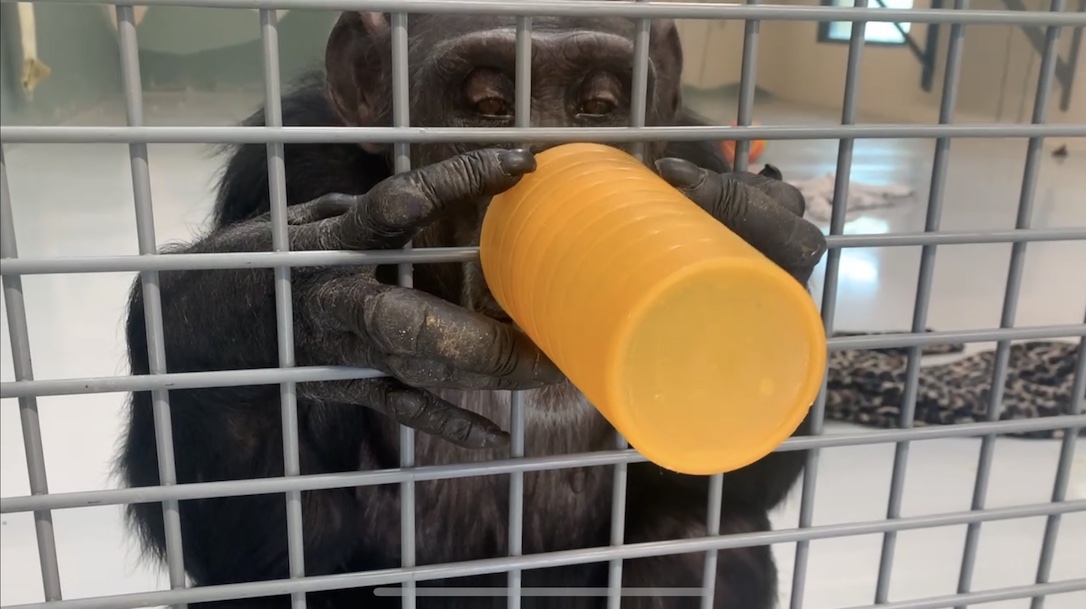

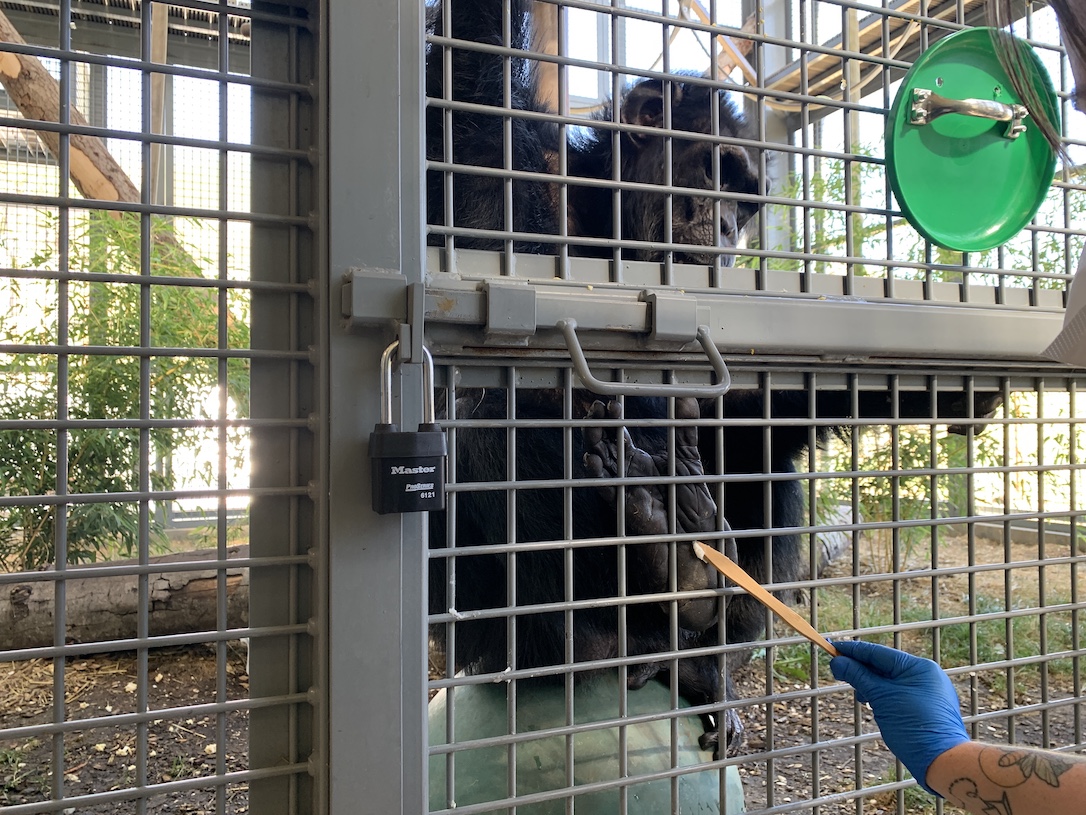
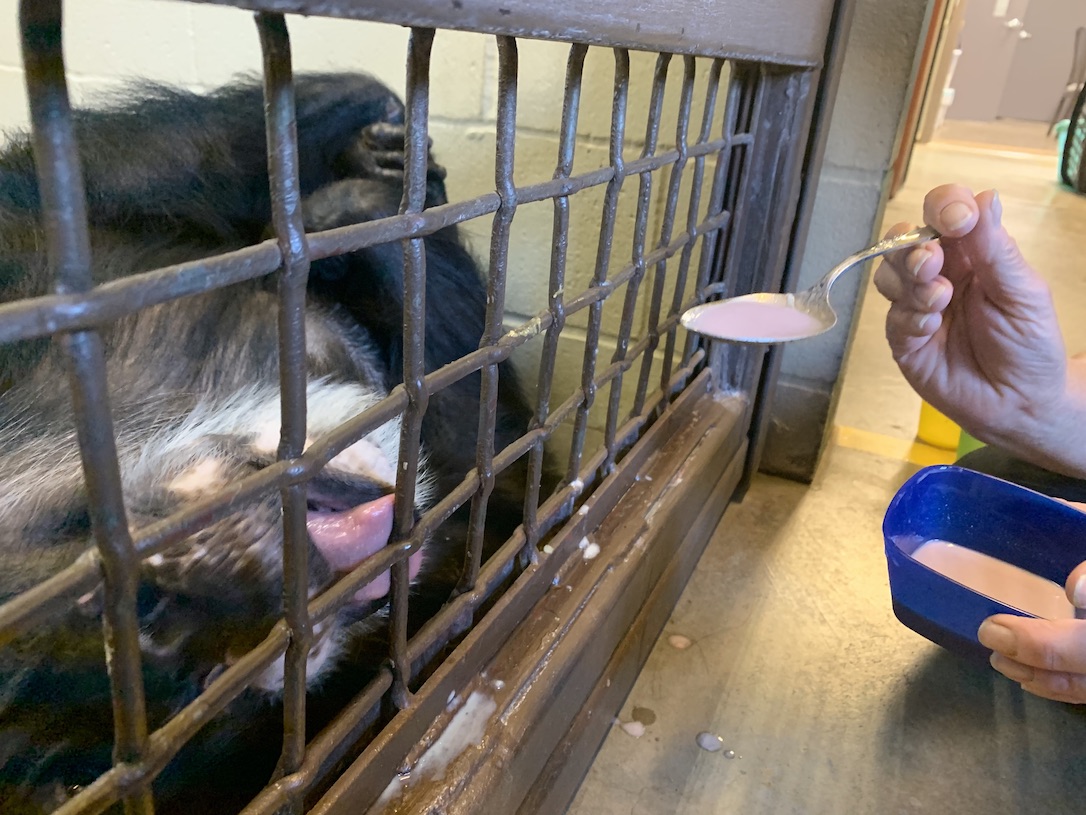






That’s a lot for Nurse Ratchet to remember every morning! Does the task get easier if itfalls to the same person more often than not? (even though I know you have charts in the kitchen/office)
Yes, I believe it does. I only work one regular shift each week in the chimp house so I’m never 2nd staff and would have a hard time putting the meds together quickly.
Thanks! It looks like Anna and I remember Anthony doing it before, too
You’ve added an extra component to the “4R’s! Right dose,right time ,right chimpanzees ,& right route. Right type of delight to accommodate their individual taste buds. Take a coffee break!! you all have amazing talents to do this everyday .
Thank you for the hard work & dedication you give every day. Double espresso for everyone :coffee:?.
Thank you J.B. for not answering these questions but also for including all the little interesting details. Wow. Thank goodness for the compounding pharmacy!
You seem to have Negra all figured out, but Gordo!? He’s one smart fellow spitting his mouthful out onto cardboard to sort out the medicine pieces. Wow!
I was touched over Honey B and Cy politely holding onto their cups awaiting staff to come back and take the cups away! Oh my gosh! And then there’s Burrito dropping and tossing his cups with glee 🙂
And Willy B’s green target. When I saw it initially on the food trolly I couldn’t figure out what it was. Then I spotted it in the photo where Willy B is having cream applied to his foot and it all clicked. All these little details are very fascinating and they give me a new perspective on each individual…. and on your patience and stick-to-itiveness to ensure all their special needs are met.
These question and answer are so incredibly helpful and important. Not that there was any doubt, but they really highlight the love and compassion you staff and volunteers have for our precious chimps. I was very cur about the birth control issue myself. With the exception of Terry & Dora why are the others not active in this manner. Is it due to the length of time they’ve been altered?
Continuing on the subject of birth control, J.B., you write :
“all of the females that regularly cycle, with the exception of Annie, are given hormonal birth control each morning.”
Can you briefly explain why Annie does not receive birth control. Does she still have a regular cycle at her age?
I think there’s a hysterectomy among them, but I thought it was Jo
None of the girls in Jamie’s group are on birth control to prevent pregnancy, since Burrito is the only male in the group. Negra has never cycled in her time at the sanctuary, and we don’t know why exactly. Foxie and Missy both had complete hysterectomies just before leaving the lab. And Jamie and Jody are on birth control for medical reasons. So that leaves Annie as the sole female forced to endure Burrito’s obsessive interest when she has a swelling!
While some chimpanzees do exhibit some sort of reproductive senescence, chimps in general don’t characteristically enter menopause the way humans do and most chimpanzees can be expected to be fertile throughout their entire lifespan.
Thank you J.B. for the answer.
Don’t ask me why, but, I was thinking perhaps, due to Burrito’s surgery, he had lost interest in the female swellings. Poor Annie! A lifetime of being hounded by dear Burrito.
Very few captive-born male chimpanzees learn to or develop the desire to copulate. It could be that they lack appropriate role models at a critical age or it could be that being raised by and around humans interferes with some sort of sexual imprinting. Some males exhibit fetishes or attraction toward humans while others exhibit a sexual desire for female chimpanzees but masturbate instead of copulating with them. One of the reasons why so many chimps in sanctuary are half-brother or half-sister is that only a handful of males sired offspring in the lab. It’s a fascinating topic and one that I plan to include in a post in the near future about why I think captivity of any kind is so damaging to chimpanzees.
Now, why is it that Terry only mates with Dora? That I don’t know…we’ve never seen him attempt to mate with anyone else so we don’t know how they would respond.
One thing I should note is that male chimpanzees in sanctuaries are typically vasectomized, which has no impact on their sexual behavior other that preventing them from impregnating a female. Burrito was surgically castrated for medical reasons, which does have an effect on his behavior but he never copulated before he was castrated.